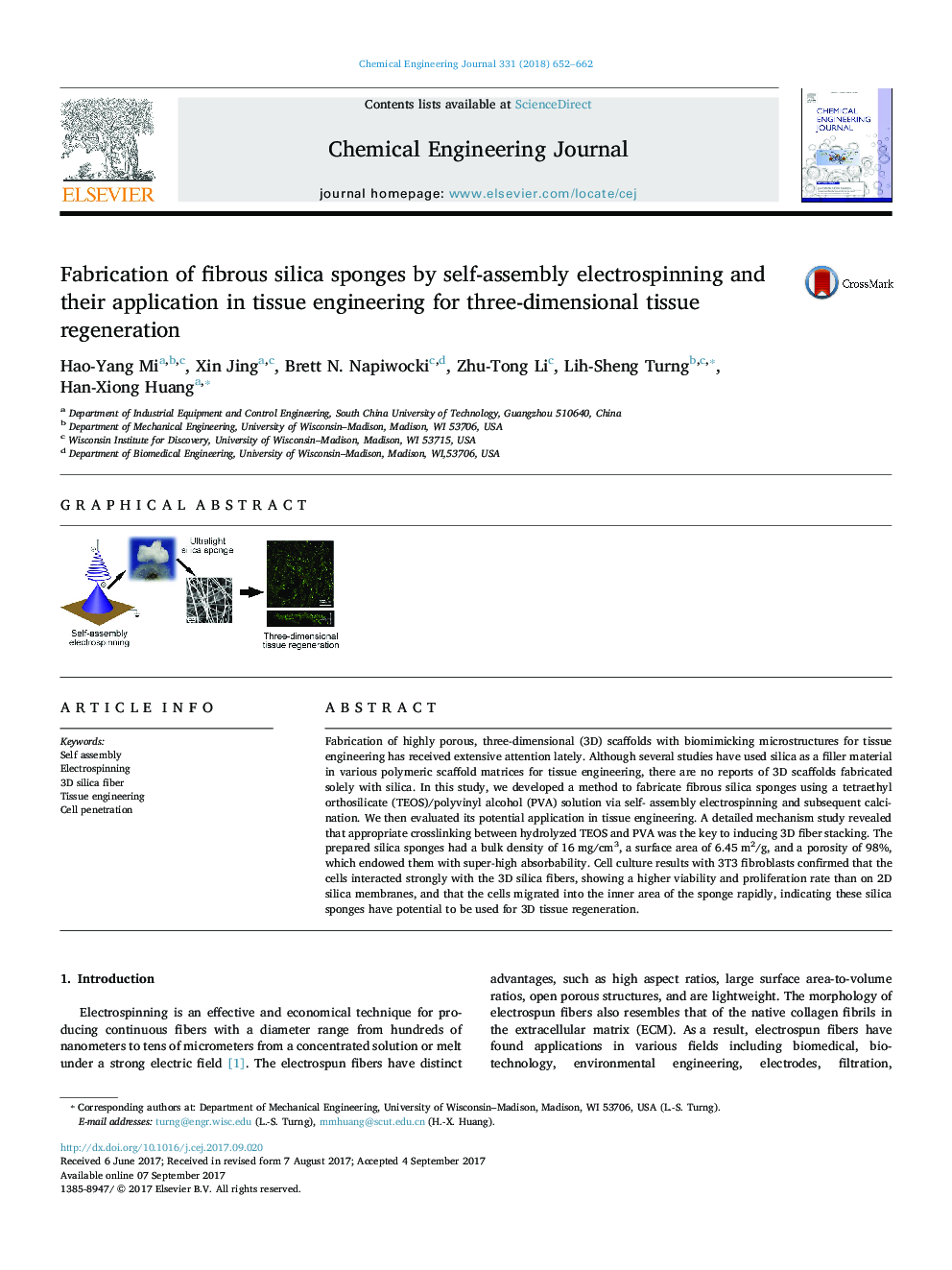| کد مقاله | کد نشریه | سال انتشار | مقاله انگلیسی | نسخه تمام متن |
|---|---|---|---|---|
| 4762853 | 1422947 | 2018 | 11 صفحه PDF | دانلود رایگان |
- Three dimensional silica sponge was prepared by self-assembly electrospinning.
- Appropriate crosslinking between TEOS and PVA was the key for 3D fiber stacking.
- The 3D fibrous silica sponges possess low density, high porosity, and surface area.
- Fibroblasts show high viability and proliferation rate on the silica sponges.
- Fibroblasts were found to penetrate into the inner area of the sponge rapidly.
Fabrication of highly porous, three-dimensional (3D) scaffolds with biomimicking microstructures for tissue engineering has received extensive attention lately. Although several studies have used silica as a filler material in various polymeric scaffold matrices for tissue engineering, there are no reports of 3D scaffolds fabricated solely with silica. In this study, we developed a method to fabricate fibrous silica sponges using a tetraethyl orthosilicate (TEOS)/polyvinyl alcohol (PVA) solution via self- assembly electrospinning and subsequent calcination. We then evaluated its potential application in tissue engineering. A detailed mechanism study revealed that appropriate crosslinking between hydrolyzed TEOS and PVA was the key to inducing 3D fiber stacking. The prepared silica sponges had a bulk density of 16 mg/cm3, a surface area of 6.45 m2/g, and a porosity of 98%, which endowed them with super-high absorbability. Cell culture results with 3T3 fibroblasts confirmed that the cells interacted strongly with the 3D silica fibers, showing a higher viability and proliferation rate than on 2D silica membranes, and that the cells migrated into the inner area of the sponge rapidly, indicating these silica sponges have potential to be used for 3D tissue regeneration.
239
Journal: Chemical Engineering Journal - Volume 331, 1 January 2018, Pages 652-662
